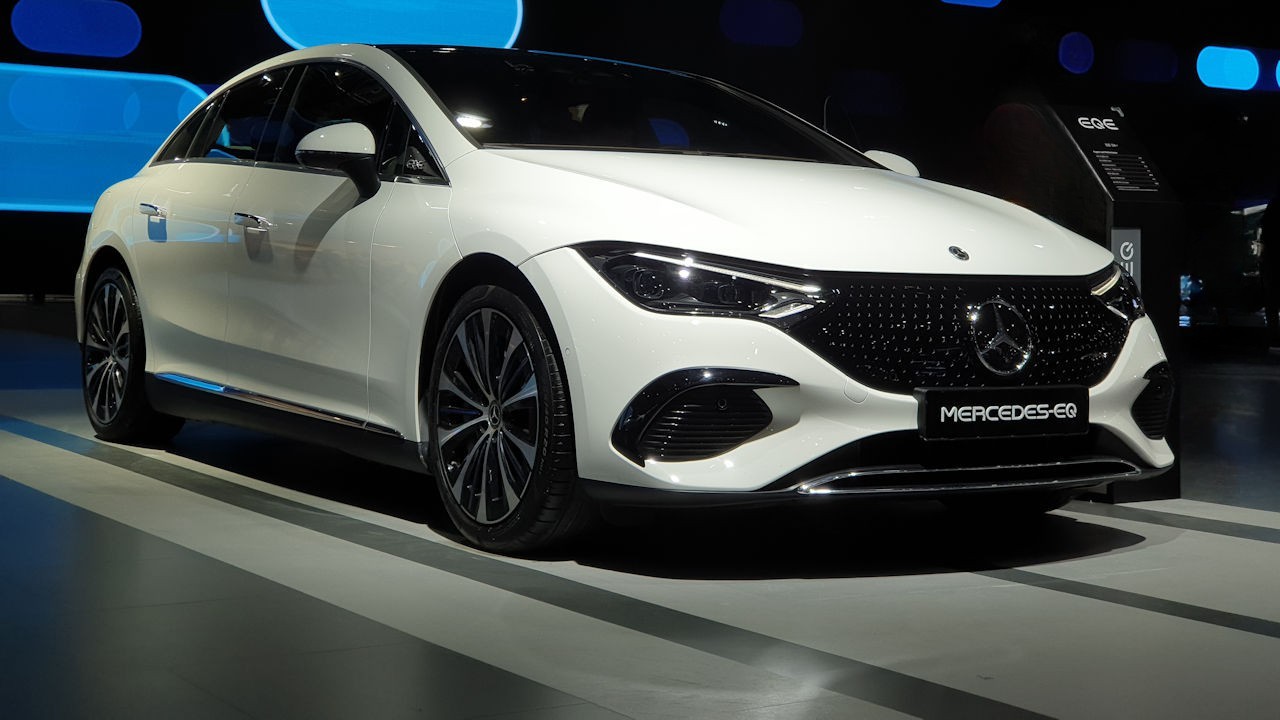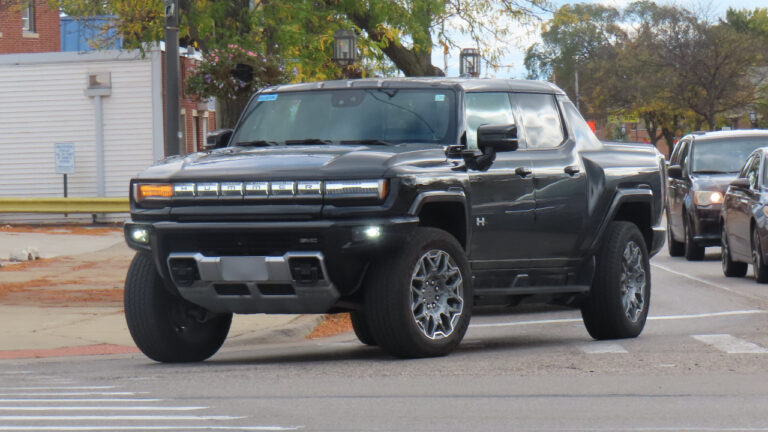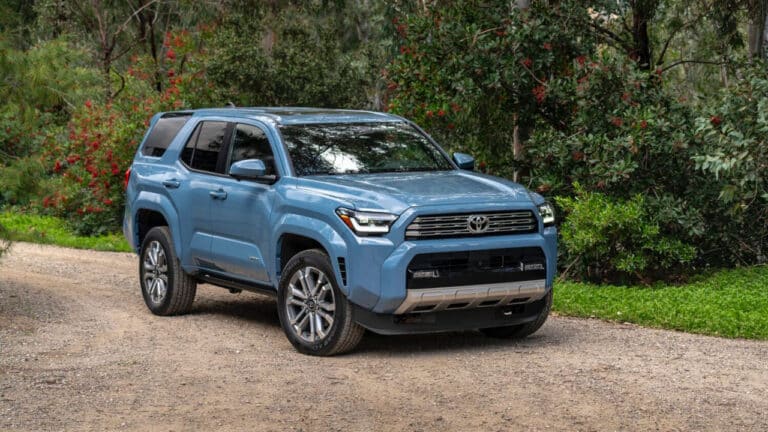13 Electric Cars That Look Fast but Are Actually Crazy Slow

Thanks to the instant torque, rapid acceleration has become one of the top pro-EV arguments we hear these days.
We know that some of the fastest-accelerating cars are electric, but maybe Tesla’s Plaid models have set the bar so high that anything slower than five seconds seems like a lifetime.
While it’s true that many electric cars have the power to push their passengers into the seats when the go pedal is floored, we’ve found 13 models that look much faster than they actually are.
Volkswagen eGolf — 0–60 Mph: 9.1 Seconds

At first glance, the Volkswagen eGolf looks like the typical hot hatchback from the Wolfsburg-based manufacturer. It’s cool, stylish, practical, and you may think it can hang with more expensive machinery when you bury the pedal.
Unfortunately, the eGolf isn’t quick at all. Thanks to its underwhelming 134hp, it takes over nine seconds to reach 60 mph — that’s an eternity in today’s world of TikTok videos. With a 35.8 kWh lithium-ion battery, it has an official range of 186 miles, but that will drop fast if you floor it. In the eGolf’s defense, it wasn’t designed from the ground up to be an EV, and the ID.3 has now taken its place.
GM EV1 — 0–60 Mph: 8.5 Seconds

Long before EVs were a real thing, GM decided to corner this niche market but ended up taking most of the EV1s back and crushing them. The EV1 was technologically advanced for its time, it was built using lightweight materials, and its teardrop-shaped two-door coupe body even looked somewhat sporty.
A zero to 60 mph time of 8.5 seconds may have been decent in the 1990s, but it doesn’t cut it in today’s fast-paced world.
Kia EV6 Light RWD SR — 0–60 Mph: 8.0 Seconds

The Kia EV6 looks aggressive, and if you opt for one of the more powerful models, it has a punch that’ll back up those looks. However, the base model EV6 Light RWD SR equipped with the standard 19-inch wheels is pretty slow.
It takes its sweet time to reach 60 mph — 8.0 seconds, to be exact. It is around $20,000 cheaper than the top trim level, and if you care more about practicality than speed, it’s a bargain.
Fiat 500e — 0–60 Mph: 8.5 Seconds

Fiat’s little 500e doesn’t look like a supercar, but true gearheads know that the Abarth versions of the 500 are proper pocket rockets. While the 500e has the same overall shape as the Abarth, it doesn’t have the performance.
Featuring just one electric motor that produces an underwhelming 117-hp, it takes the Fiat 500e 8.5 seconds to reach 60 mph, and it has a 94 mph top speed. The Abarth 500e has 155-hp and a 7.0-second 0 to 60 mph time, but there’s no confirmation that it’ll be sold in the States.
Nissan Leaf — 0–60 Mph: 7.4 Seconds

Nissan’s first-gen Leaf was severely underpowered, lacked range, and its design reminded us of a baby shoe. At least it wasn’t hard to improve it. Now, in its second generation, the Leaf looks like an aggressive hot hatch, but its performance is closer to that of a hot hatch from the 1990s.
Its 143 electric horses are sent to the front wheels, and if you can avoid wheel spin, it’ll eventually get you to 60 mph in 7.4 seconds.
Mercedes-Benz EQE 350+ — 0–60 Mph: 6.2 Seconds

Mercedes-Benz’s EQE 350 Plus offers plenty of luxury, but it’s lacking a bit in the performance department. It has a single motor powering the rear wheels, and its 288-hp makes it one of the slowest models in its class and price range.
Zero to 60 mph takes 6.2 seconds, which is on par with ICE sedans from a decade ago. At least it’s possible to order it with the AMG interior package to make it more sporty, and the M-B debadging service will give it a stealthier look.
Mini Cooper SE — 0–60 Mph: 6.0 Seconds

Since their introduction in the 1960s, Mini Coopers have been some of the most fun cars to drive — even if they weren’t the fastest cars on the road. That still applies to the new Mini Cooper SE, which looks like a more futuristic version of the iconic hatchback.
With a single 181-hp motor driving the front wheels, it’s still not the fastest thing around. The Mini takes 6 seconds to reach 60 mph and has a top speed of 93 mph.
Hyundai Ioniq 6 SE — 0–60 Mph: 6.0 Seconds

We love the Hyundai Ioniq SE’s design, which was clearly inspired by two of the most iconic cars in history — the Porsche 911 and Citroën DS. Its sleek lines make it look more aerodynamic than some sports cars, but the base model doesn’t live up to performance expectations.
With a single motor at the rear, the Ioniq 6 SE only has 225 electric ponies, translating into a 6-second 0 to 60 mph sprint and a 115 mph top speed.
Polestar 2 — 0–60 Mph: 5.9 Seconds

Seeing as Polestar started out as a Volvo tuning specialist, we still think of high-performance vehicles when we hear the name. However, once you’re behind the wheel of the RWD Polestar 2 base model, it becomes obvious that it’s not a full-fledged performance car.
With 299-hp, it can reach 60 mph in 5.9 seconds and has a top speed of 127 mph. It’s not terribly slow but fairly average by today’s standards.
Tesla Model 3 — 0–60 Mph: 5.8 Seconds

Looks-wise, the Tesla Model 3 is almost identical to the Performance model. Seeing as Tesla has earned a reputation for making ludicrously fast cars, most people would never consider challenging a Model 3 for fear of being embarrassed when the light turns green.
However, not all Teslas are supercar slayers. The base Model 3’s single motor only produces 271-hp, and it takes 5.8 seconds to reach 60 mph — much slower than the Model S Plaid.
BMW i4 eDrive35 — 0–60 Mph: 5.8 Seconds

In the States, the BMW i4 eDrive35 is the brand’s least powerful model, built on the modular Cluster Architecture (CLAR) platform. Its 282-hp motor allows it to accelerate to 60 mph in 5.8 seconds, and the speedometer stops at 118 mph.
Considering that it has less than 300-hp, those aren’t horrible numbers, but there are SUVs out there that’ll leave the Bimmer in their dust. At least it’s possible to make it look sportier with the optional M Sport package.
BMW i5 eDrive40 — 0–60 Mph: 5.7 Seconds

We love how the BMW i5 looks like a proper sports sedan, and in a way, it is. It’s not that long ago that a sedan with 335-hp and a 5.7-second 0 to 60 mph time would be considered fast.
Today, those stats are only impressive when compared to middle-of-the-pack ICE models. Its 0 to 60 time is virtually identical to the BMW 530i, and almost a second slower than the 540. Comparing it to the M5 is pointless, but at least the i5 can be specced with an M Sport package.
Porsche Taycan — 0–60 Mph: 5.1 Seconds

In Turbo GT spec, the Porsche Taycan is supercar fast, and it’ll get to 60 mph in just 2.3 seconds (2.2 with the Weissach package). The standard Taycan is nowhere near that quick.
With a single motor on the rear axle, it produces 402-hp and 254 lb-ft of torque, which will send it to 60 mph in 5.1 seconds and on to a top speed of 143 mph. For over $90,000, that’s somewhat disappointing, but at least it looks great.





